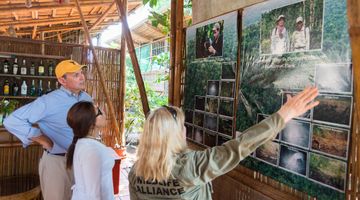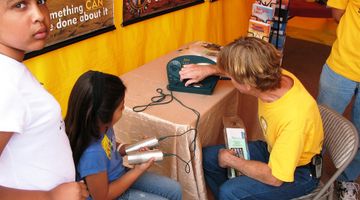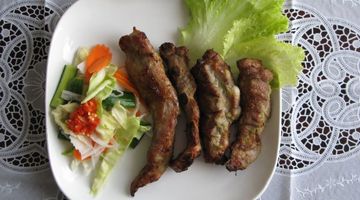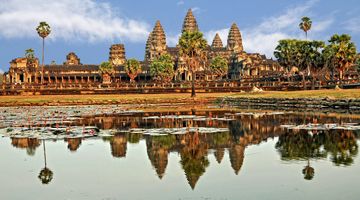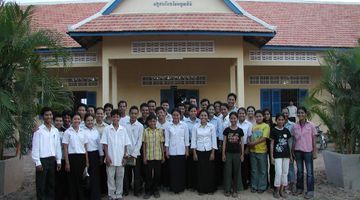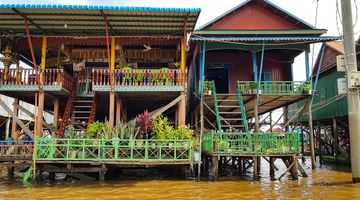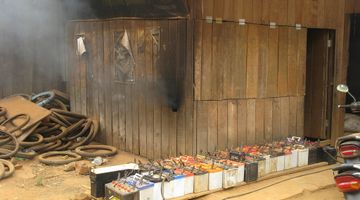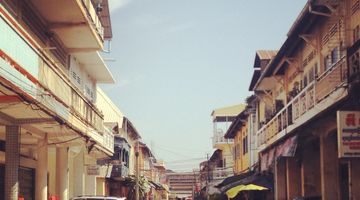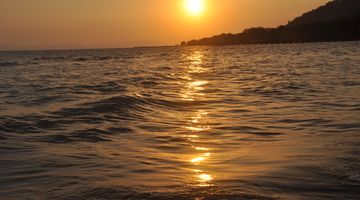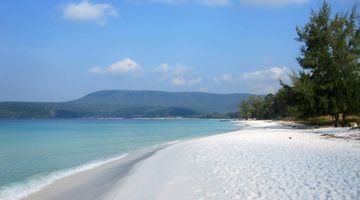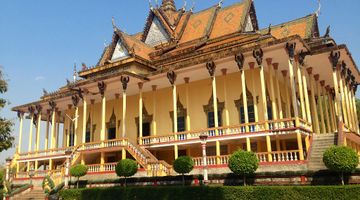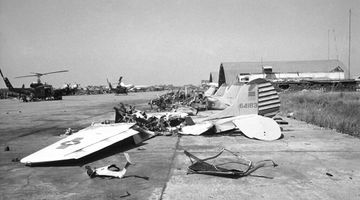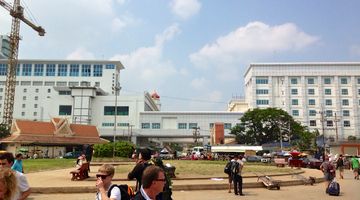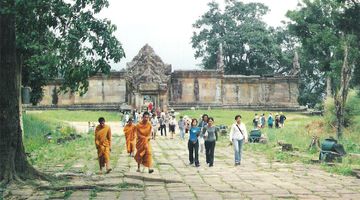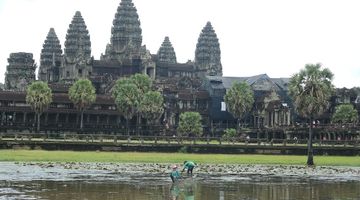Your Guide to Ruins, Beaches, Jungles, and Flavors
Are you dreaming of Ancient ruins? In Cambodia there are plenty. What about pristine beaches? Here you can find more than enough – and often more spectacular than you would have expected. Maybe jungle trekking? Put on your trekking shoes immediately! See the best world pepper being cultivated or salt harvested in the glittering salt fields. Are you a foodie, aren’t you? Then you will be delighted to find out that the Khmer food is full of flavor but without the scorching chili of the neighbors. Coffee lovers will find their caffeine fix, too.
Why should you visit Cambodia?
Angkor is one of the most impressive of all the ancient cities. It may have not been included in the recent list of the new Seven Wonders of the World, but Angkor is definitely not less impressive than the Great Wall of China, Petra, the Taj Mahal, or Chichen Itza. If you do not believe us, head there straight away and see it with your own eyes!
There is much more to the ancient temples of the Khmer Empire than just Angkor Wat, Angkor Thom, and Baphuon. Venture further afield to get the most of them. Spending the day off at one of the isolated far-flung temples will enhance your life experience with new emotions.
And yet, even if the most popular route around Angkor is all you can do, you won’t be disappointed either. Angkor is a wonder, whatever the New7Wonders Foundation says.
How can I get to Cambodia
Traveling from Vietnam to Cambodia
Traveling from Vietnam to Cambodia offers several options to suit different budgets and preferences. One of the most convenient ways to travel is by plane. The flight from Ho Chi Minh City to Phnom Penh takes about 1 hour, the cost varies from 50 to 150 dollars.
For those who prefer a more economical trip, there are alternative options. The bus ride from Ho Chi Minh City to Phnom Penh takes about 6 hours and is inexpensive, with prices starting at $12. Another option is to travel by car, which takes around 5 hours and offers flexibility and the opportunity to explore different attractions along the way.
For those who want to travel from Hanoi to Siem Reap, flights are available that take about 2 hours and cost between $100 and $200. Alternatively, you can take the train and bus.
Whether you choose the speed and convenience of flying or the adventure and economy of traveling by bus or car, you'll find a travel option that suits your needs when traveling from Vietnam to Cambodia.
Traveling from Thailand to Cambodia
Traveling from Thailand to Cambodia offers a variety of options to suit every budget and preference.
One of the fastest and most convenient ways to travel is by plane. The flight from Bangkok to Phnom Penh takes about an hour and costs from $44 to $120. Another popular route is from Bangkok to Siem Reap, a one-hour flight with prices starting from $58. These flights are ideal for those looking to make the most of their time exploring Cambodia.
There are alternative options for those who prefer more economical and adventurous travel. Traveling by bus from Bangkok to Cambodia takes approximately 12 hours and is economical. It offers a scenic and exciting experience, passing through various landscapes and local towns. Another option is to travel by car, which takes about 9 hours.
Traveling from the United States to Cambodia
Traveling from the US to Cambodia usually involves long-haul flights. Flights are available from major US cities such as Los Angeles, San Francisco, New York, and Chicago. Total flight time, including transfers, is typically 20 to 24 hours, and economy-class tickets typically cost between $600 and $1,500.
Major airlines offering these flights include Korean Air, Cathay Pacific, EVA Air, and Qatar Airways, with connections in cities such as Seoul, Bangkok, and Hong Kong.
Make sure you have the required visa to enter Cambodia. Tourist visas are often available on arrival but check the current requirements before you travel.
Traveling from Europe to Cambodia
Many flights depart from major European cities such as London, Paris, Frankfurt, and Amsterdam. The total flight time, including transfers, is typically between 15 and 20 hours, and economy-class tickets typically cost between $500 and $1,200.
Major airlines offering these flights include Emirates, Qatar Airways, Turkish Airlines, and Singapore Airlines, with connections in cities such as Doha, Istanbul, and Singapore.
Traveling around Cambodia
Getting around Cambodia can be a real adventure, offering a variety of transport options to suit every taste and budget. Domestic flights are a fast and convenient way to travel between major cities such as Phnom Penh, Siem Reap, and Sihanoukville. Airlines operating these routes include Cambodia Angkor Air, JC International Airlines, and Cambodia Airways.
Buses are a popular choice for those who prefer land transportation. Well-known bus companies include Giant Ibis, Mekong Express, and Phnom Penh Sorya. Taxis and taxi services are widely available in major cities. Taxis can be booked through hotels or taxi ranks, but it is important to agree on the fare before starting your trip.
Tuk-tuks and moto-dopes (motorcycle taxis) are convenient for traveling short distances. Tuk-tuks are widely available and offer a unique local experience, while moto-dos are cheaper and easier to navigate in traffic. Bike rental is ideal for those who want to explore cities and countryside at a leisurely pace. They are usually affordable and cost between $1 and $5 per day.
Boats and ferries are another means of transport, especially for travel between Phnom Penh and Siem Reap on the Tonle Sap River or to islands such as Koh Rong and Koh Rong Samloem from Sihanoukville.
How to get around in Cambodia
During the last 5–7 years, Cambodia’s major thoroughfares have received a modern facelift. The highways connecting the country's most popular destinations, like route 6 between Poipet and Phnom Penh, have new pavement now, but in parts, they remain nothing more than a two-lane freeway used by all possible means of transport—from buffalo karts and motorbikes to express buses and large trucks.
Very often, overtaking drivers are not interested at all if there is oncoming traffic or not. Driving at night-time is more dangerous and if you can try to avoid taking night buses.
Though the conditions of some roads still leave much to be desired, and there is a long way to go before the local standards come anywhere close to those, say, of Thailand, you can already travel comfortably by bus between the major tourist destinations in Cambodia.
Cambodian Buses
There are international bus links with Thailand from Phnom Penh to Bangkok or from Siem Reap to Bangkok, Vietnam from Phnom Penh to Ho Chi Minh City, and Laos from Siem Reap to Pakse. These bus routes facilitate travel around the region and let budget-conscious travelers move between the neighboring countries with ease and comfort.
A good network of interprovincial buses also contributes to the growth of tourism within the country as do domestic flights linking the major tourist destinations – now it is easy to move around the country as never before.
Cambodian bus
Taking the Train in Cambodia
Train travel in Cambodia, operated by the Royal Cambodian Railway, offers a scenic and unique travel experience. Key routes include Phnom Penh to Sihanoukville, famous for its beaches, and Phnom Penh to Poipet via Battambang, which connects to Thailand. A trip to Battambang, famous for its colonial architecture, offers spectacular views of the countryside.
Although trains are slower than other modes of transport, they are comfortable, ranging from standard to VIP carriages. Tickets can be purchased at stations or online; during peak season it is advisable to book in advance. Despite occasional delays, train travel in Cambodia is affordable and offers a relaxing way to explore the countryside and local life.
Where to go in Cambodia?
Our love affair with Cambodia turned out to be time-tested and enduring, and we encourage you to plan at least a two-week journey to the country, which will include more ancient ruins, secret paradise island hideaways, charming towns oozing that old-fashioned colonial flare, and a close-to-nature experience in the Cardamom mountains and the country’s national parks.
Angkor Archaeological Park
A UNESCO-listed World Heritage Site, Angkor used to be the capital city of the Khmer Empire. The vast complex comprises a collection of important archaeological sites and is an amazingly atmospheric and enigmatic place to explore.
The gateway to the wonders of Angkor, Siem Reap is the most convenient base for exploring the historical park with all the facilities and services geared towards traveler’s needs.
Tonle Sap Lake
A unique body of water with astonishing biodiversity and the largest lake in Southeast Asia, Tonle Sap Lake is also the heart and soul of the nation. Join an organized tour to visit famous floating villages or take a boat from Battambang to Siem Reap which offers a more authentic experience.
Phnom Penh
The capital of Cambodia with a rather tumultuous past, Phnom Penh is changing rapidly. Modern shopping malls and high-rises are mushrooming in the city where exquisite Buddhist temples and leafy boulevards still remember the darkest pages of its history.
Exquisite Buddhist temples such as Wat Phnom, the city's namesake temple, and the Silver Pagoda in the Royal Palace complex offer a serene retreat and are a testament to Cambodia's rich spiritual heritage. The Royal Palace itself, with its classic Khmer roofs and ornate gilding, is a prime example of traditional Cambodian architecture and remains a royal residence.
The city's waterfront, Sisowath Quay, is a popular destination among locals and tourists alike. There are plenty of cafes, restaurants and bars where you can grab a bite to eat or drink while watching the sunset over the Tonle Sap and Mekong rivers. Nearby is the vibrant Central Market, with its distinctive Art Deco dome, offering vibrant shopping with everything from fresh produce to souvenirs.
For those interested in contemporary culture, Phnom Penh has a thriving arts scene. The city has a variety of galleries, theaters and cultural events showcasing everything from traditional dance performances to contemporary art exhibitions.
Sihanoukville
The white sand beaches of Sihanoukville attract travelers of all styles. Young and adventurous find wild parties and an old-school backpacker vibe here, while rich and respectable go for all comforts in luxurious resorts.
You can access stunning islands such as Koh Rong and Koh Rong Samloem. Ochheuteal and Serendipity beaches have plenty of bars and restaurants. If you are an adventure seeker, you should enjoy water sports or explore Ream National Park and visit the Kbal Chhay Waterfall, a serene escape with natural pools perfect for swimming.
Don't miss the chance to visit the bustling Phsar Leu Market for local goods and street food.
It offers a combination of natural beauty, vibrant entertainment, and unique activities, from viewing bioluminescent plankton to exploring hidden waterfalls, making it a must-see destination in Cambodia.
Popular activities in Cambodia
Ancient ruins in Cambodia
With no public transport available, getting to Koh Ker, the 10th-century capital of the Khmer Empire, is a challenge. However, ruins lost in the jungle are indeed very rewarding, and you can expect to have the whole place to yourself.
A sure bet for those who appreciate the quiet charm of small towns and yet wish to see some of the most spectacular ruins in Cambodia, Kampong Thom is a dream destination. Tour the area around Kampong Thom to have glimpses of everyday life in rural Cambodia.
Commanding views from the top of the hill by the border between the two countries, the spectacular Preah Vihear has long been a bone of contention for Thailand and Cambodia. It is really spectacular and can nowadays be visited only from Cambodia.
Beaches in Cambodia
When you think of pristine tropical islands with white sand beaches kissed by crystal clear seas and an interior covered with lush jungle, Cambodia may not come to your mind as the number one destination – and it is a good reason to consider checking Koh Rong before it is too late!
Just by Koh Rong’s side sits a smaller island, Koh Rong Sanloem, an ultimate island paradise.
A tranquil alternative to Sihanoukville, Kep boasts great seafood and is unspoiled by the mass tourism atmosphere. Offshore islands are a sure draw, and the border crossing with Vietnam is easily reached, too.
Koh Ta Kiev is the largest of a small group of Cambodian islands. It is located 4 km from Otres Beach in Sihanoukville and just 1 km from the coast of Ream National Park in Sihanoukville province.
Trekking and nature in Cambodia
Putting their toes in eight provinces of Cambodia, the Cardamom and Elephant Mountains stretch from the border with Thailand through Central Cambodia and almost up to the border with Vietnam. Trekking or boat tours are best organized from Koh Kong.
A small town in Ratanakiri province, Banlung offers the rare feeling of getting away from it all. Home to minority groups, rubber and oil palm tree plantations, beautiful waterfalls, and protected areas, it is worth the effort to get there.
If you are fond of dolphins, Kratie is not to be missed. It is one of few places in the world where you can meet gentle and endangered Irrawaddy dolphins.
Rustic charm of off-the-beaten-path destinations
Battambang, the second-largest city in Cambodia, mainly remains a destination off the beaten track. The city boasts some nice colonial architecture and several worth-seeing ancient temples dot the area around it. The only bamboo train of its kind may soon cease to exist as plans to restore the railway system in Cambodia are on the way.
Take the relaxed atmosphere of a riverside town, add the breezy chill of the former French hilltop station of Bokor, throw in the lively yet not wild restaurant and bar scene, and spice it all with the best pepper ever. That is what Kampot has on offer.
Experiencing Khmer Cuisine
Cambodia's culinary scene is a delight for foodies. Enjoy traditional dishes like Amok (a coconut milk curry), Lok Lak (stir-fried beef), and fresh seafood. Don’t miss trying the famous Kampot pepper.
Amok is a flavorful coconut milk curry often prepared with fish, chicken, or tofu and steamed with banana leaves, which gives the dish a unique and aromatic taste.
Lok Lak, another popular dish, features succulent stir-fried beef marinated in a spicy sauce, usually served with lime-pepper sauce, fresh vegetables and rice or fries.
One culinary delight that cannot be missed is the Kampot pepper, considered one of the best in the world. Grown in the Kampot region, this pepper is renowned for its complex flavor that combines heat with a subtle floral aroma. It enhances many local dishes and is a key ingredient in traditional recipes.
Cambodia Itinerary
The best Cambodia itinerary depends on your travel time and interests. We suggest a 10-day trip that will cover the highlights and provide a comprehensive Cambodian experience.
Day 1-2. Upon arrival in Phnom Penh, spend the day visiting the Royal Palace and Silver Pagoda. In the evening, take a stroll along the promenade and have dinner at a local restaurant.
In the afternoon, visit the Tuol Sleng Genocide Museum (S-21) and the Choeng Ek Killing Fields, National Museum of Cambodia. Don’t forget to visit the bustling markets or take a sunset cruise along the Mekong River.
Day 3-4. Travel by bus to Battambang, the journey is approximately 5-6 hours. After checking into your hotel, take a unique ride on the famous Bamboo Train. Spend the evening exploring Battambang's colonial architecture and dine at a riverside restaurant. Visit local markets and explore the countryside on a bike ride, stopping at local villages and temples. In the afternoon, visit Phnom Sampo, a hill with killer caves and a Buddhist shrine, offering panoramic views. End the day with a visit to Battambang Circus, Phare Ponleu Selpak.
Day 5-7. Travel to Siem Reap, which takes approximately 3-4 hours. Upon arrival, check into your hotel and visit the Angkor National Museum. In the evening, explore Pub Street and the Night Market for dinner and shopping. Start another day early with a sunrise visit to Angkor Wat, followed by a full day exploring the main temples of Angkor Archaeological Park, including Angkor Thom, Bayon, Ta Prohm, and Angkor Wat. Return to Siem Reap for dinner and relaxation in the evening. Then you can focus on the less-visited ones like Banteay Srei and Preah Khan. In the evening, enjoy a traditional Apsara dance performance with dinner.
Day 8. Take a morning boat tour of Tonle Sap Lake, visit the floating villages, and learn about the unique ecosystem. In the afternoon, return to Siem Reap and visit Artisans Angkor to see traditional crafts. The evening is free for you to explore Siem Reap or relax.
Day 9-10. Fly from Siem Reap to Sihanoukville in the morning. Take a day trip to Koh Rong or Koh Rong Samloem for snorkeling, swimming, and relaxation. Return to Sihanoukville in the evening for your last dinner in Cambodia.
Cambodia Travel Tips
The first thing that comes to your mind on hearing ‘Cambodia’, is arguably ‘Angkor’. And yes, the remnants of the powerful Khmer Kingdom of the times long passed are as impressive as they can get.
Chances that Angkor will be the main reason – or the first/only reason – for which you would ever think about visiting Cambodia are not just high; they are 100% sure. If you have just a couple of days at your disposal and wish to make the first acquaintance, then you will most probably based in Siem Reap with several temples of the Angkor Small Circle and a floating village at Tonle Sap Lake as the only things you will have time to check – and that is already good enough.
Check out Weather in Cambodia and Visa to Cambodia pages to get prepared for your trip.
Safety in Cambodia
Cambodia remains largely a safe place to visit. Do not put on pink glasses, though. Do not be surprised to hear immigration officers request that you pay for' a quick lane’ when entering the country. Remember that punishments for drug use are harsh in Cambodia. Read our Safe Travel in Cambodia to find out more about scams and dangers you are risking to come across there. Use your common sense and enjoy your trip!
Explore the beauty and wonders of Cambodia. Watch our video about Cambodia on YouTube for an immersive experience that will transport you to the heart of this fascinating destination.
FAQs:
How long should I spend in Cambodia? The ideal time in Cambodia depends on your interests. For a short trip of 3-5 days, focus on Angkor Wat in Siem Reap and key sites in Phnom Penh. A 7-10 day trip can include Siem Reap, Phnom Penh, and Sihanoukville, while 2 weeks or more allows for in-depth exploration of additional destinations like Battambang, Kampot, and Kep.
What can I do in one week in Cambodia? In one week in Cambodia, explore the Angkor Wat temples in Siem Reap for three days, then spend two days in Phnom Penh visiting the Royal Palace, Silver Pagoda, and Tuol Sleng Genocide Museum. End your trip with two days on the coast, relaxing on Sihanoukville's beaches or exploring Kampot's countryside and pepper farms.
What is the best month to visit Cambodia? The best month to visit Cambodia is typically November. During this time, the weather is cool and dry, making it ideal for exploring temples, enjoying the beaches, and participating in outdoor activities. This period follows the rainy season, so the landscape is lush and green, and the temperatures are more comfortable compared to the hotter months.

















